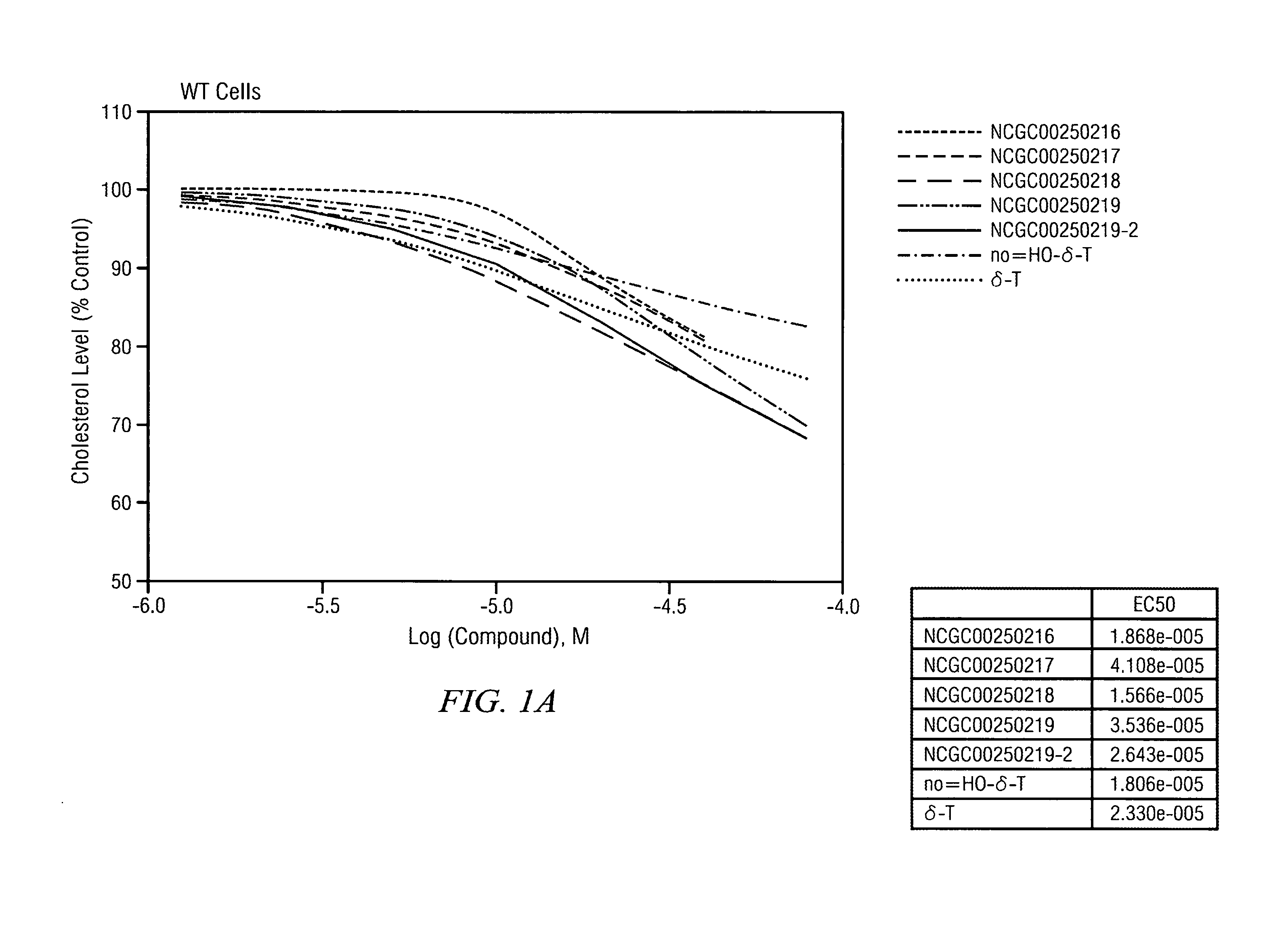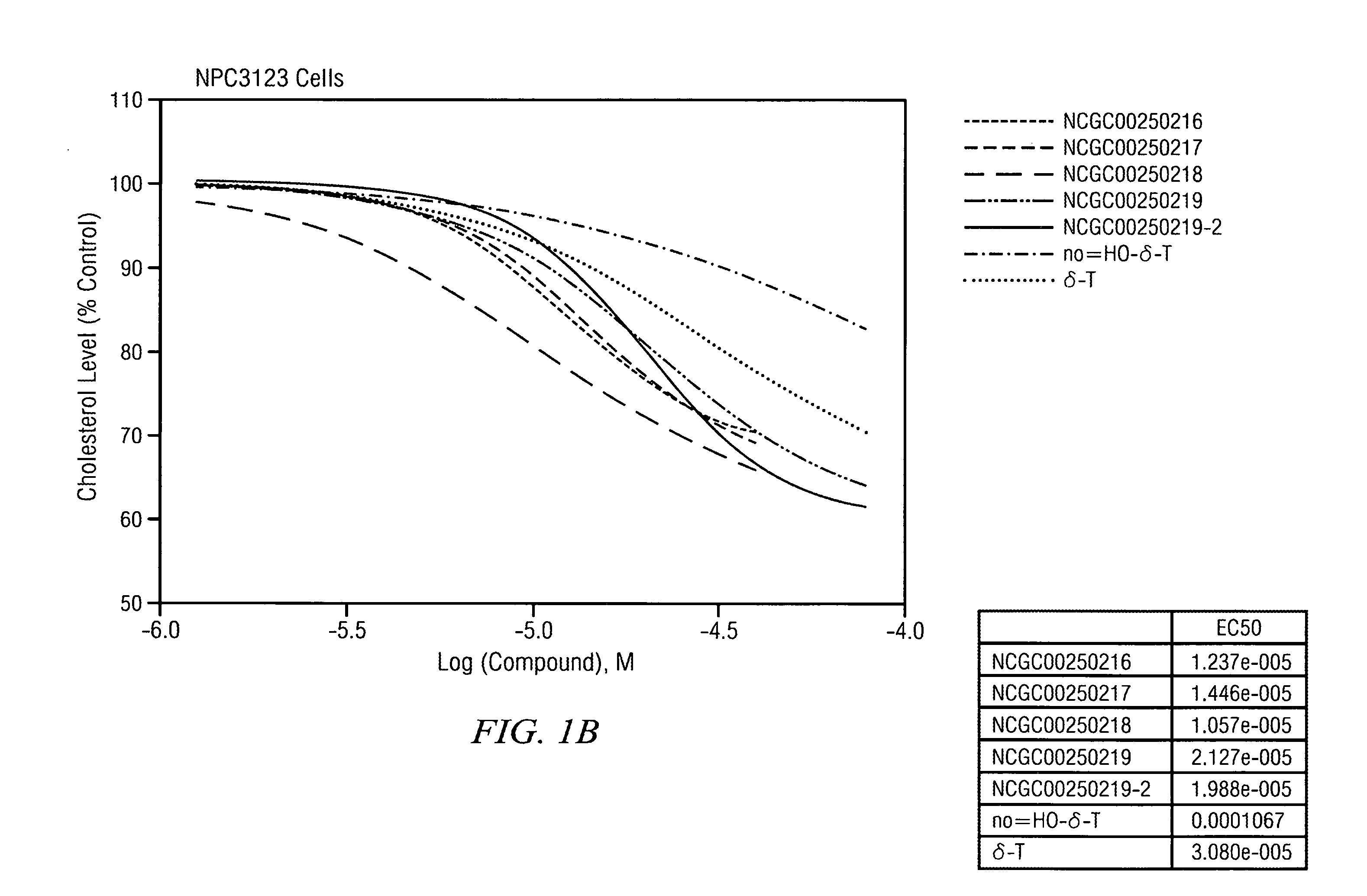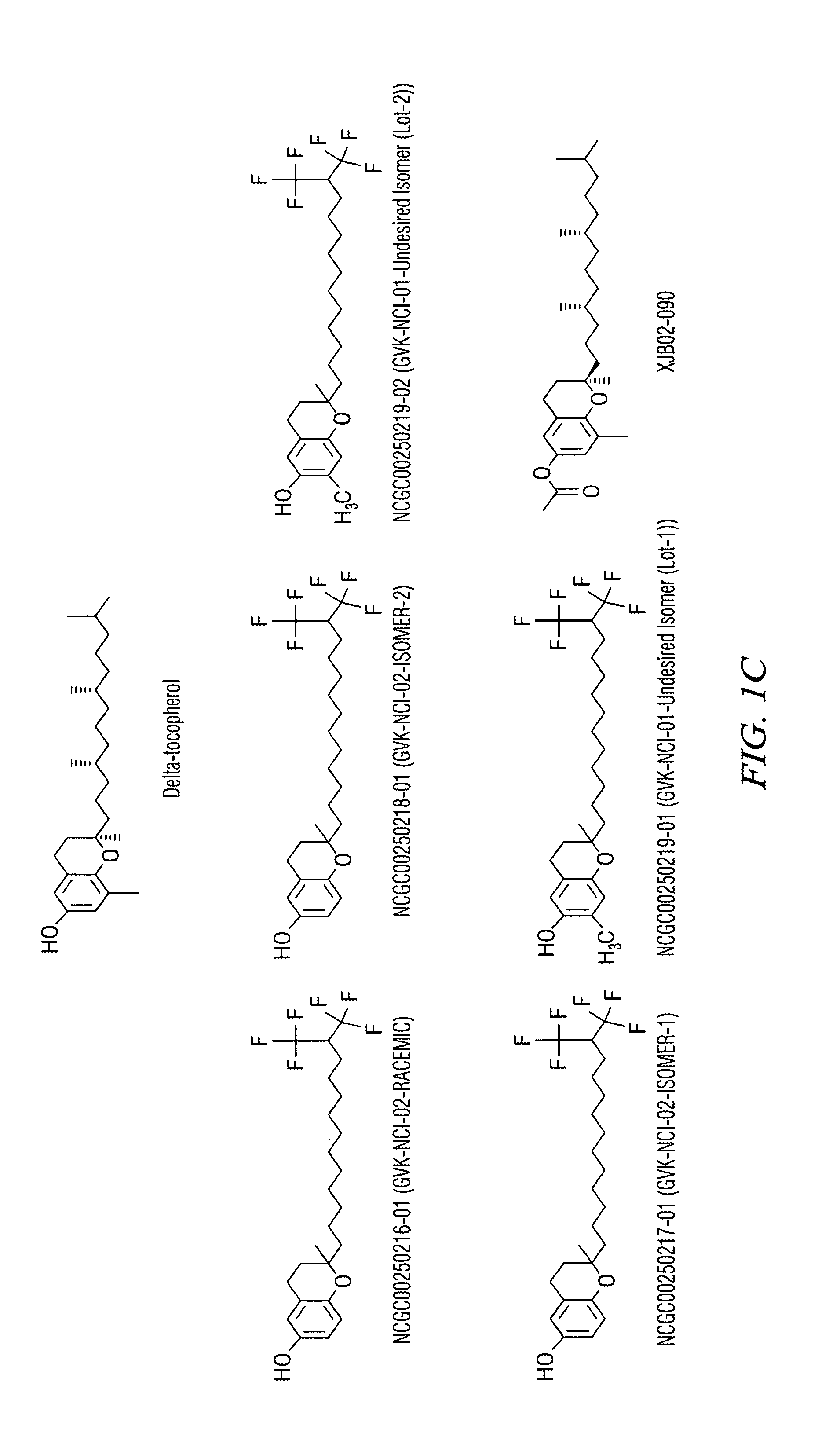Tocopherol and tocopheryl quinone derivatives as correctors of lysosomal storage disorders
- Summary
- Abstract
- Description
- Claims
- Application Information
AI Technical Summary
Benefits of technology
Problems solved by technology
Method used
Image
Examples
example 1
Synthesis of a Tocopherol Derivative
Step 1
[0081]
Reaction Procedure:
[0082]To a 0° C. cooled solution of NaH (5.75 g, 143.67 mmol, 1 eq.) in dry DMF (100 mL), was slowly added compound 1 (25 g, 143.67 mmol, 1 eq.) in dry DMF (150 mL) at 0° C. and the resulting mixture was stirred 1 h at 0° C. After 1 h, benzyl bromide (20.62 ml, 172.41 mmol, 1.2 eq.) was added to the reaction mixture slowly drop-wise over a period of 20 min at 0° C. Then the reaction mixture was stirred at room temp for 12 h. After the completion of the reaction was checked by TLC, the reaction mixture was quenched in ice water and the aqueous layer was extracted with ether (2×30 mL). The combined organic extracts were dried over Na2SO4, filtered and concentrated under reduced pressure to obtain the crude product. The crude was purified by flash column chromatography over silica gel (100-200 mesh) by using 10% ethyl acetate in pet ether as eluent to obtain (23 g, yield—60%) of pure compound.
[0083]NMR data verified cha...
example 2
Reduction of Cholesterol Levels in Wild Type and in NPC Fibroblast Upon Treatment with Delta Tocopherol and Analogues
[0111]The half maximal effective concentration (EC-50) for delta-tocopherol and five analogues was measured in wild type and NPC 3123 cells. FIG. 1A illustrates that as delta-tocopherol and analogue concentrations increased in wild type cells, serum cholesterol levels dropped. Further, in NPC cells (FIG. 1B), the cholesterol level drop was substantial relative to the control (no delta-tocopherol). The IC50 for phenotypic cholesterol elimination in NCP fibroblasts upon exposure to NCGC00250218 was in the range of 10 μM. The most significant change was seen with the “X-analogue” or NCGC00250218. Indeed, CF3-tocopherol was more potent that delta-tocopherol (δ-T).
example 3
Filipin Staining Assay for the Evaluation of Cholesterol Levels in Wild Type and in NPC Fibroblast Cells Upon Treatment with Delta-Tocopherol and NCGC00250218 (X-Analogue)
[0112]Filipin, a histochemical dye for cholesterol, was used to detect cholesterol in wild type fibroblasts and NPC fibroblasts. Control fibroblasts, i.e., wild type and NPC fibroblasts, were treated only with filipin and no delta-tocopherol or analogues. Experimental samples were NPC cells that received either the X-analogue or delta-tocopherol. FIG. 2 shows that NPC cells treated with filipin and X-analogue (20 μM) have less cholesterol than NPC cells treated with filipin and delta-tocopherol (40 μM). Thus, treatment of NPC cells with X-analogue significantly reduces cholesterol level relative to cells treated with delta-tocopherol, even though the latter was used at double the concentration as the former.
PUM
| Property | Measurement | Unit |
|---|---|---|
| Composition | aaaaa | aaaaa |
| Structure | aaaaa | aaaaa |
Abstract
Description
Claims
Application Information
 Login to View More
Login to View More - R&D
- Intellectual Property
- Life Sciences
- Materials
- Tech Scout
- Unparalleled Data Quality
- Higher Quality Content
- 60% Fewer Hallucinations
Browse by: Latest US Patents, China's latest patents, Technical Efficacy Thesaurus, Application Domain, Technology Topic, Popular Technical Reports.
© 2025 PatSnap. All rights reserved.Legal|Privacy policy|Modern Slavery Act Transparency Statement|Sitemap|About US| Contact US: help@patsnap.com



